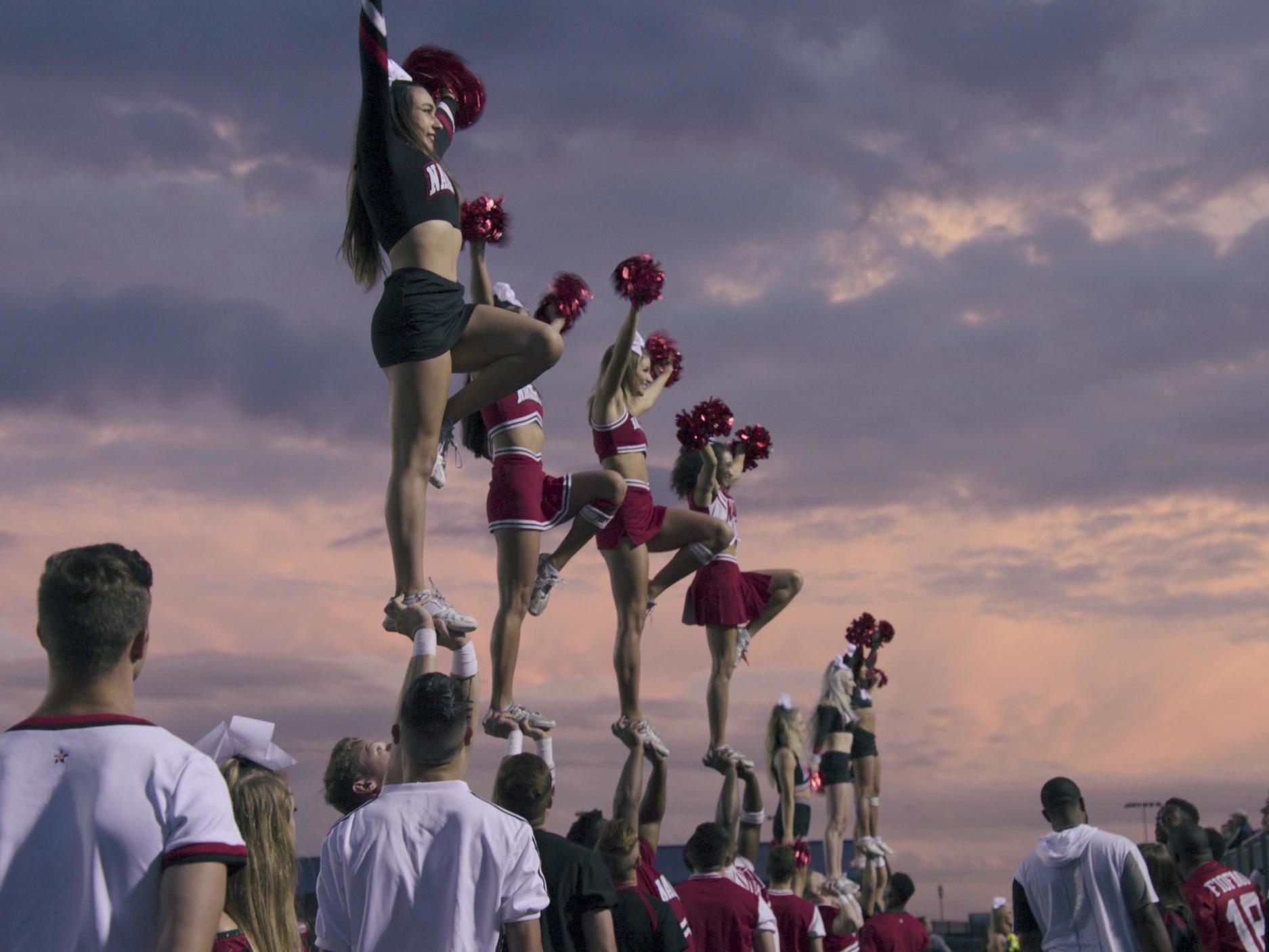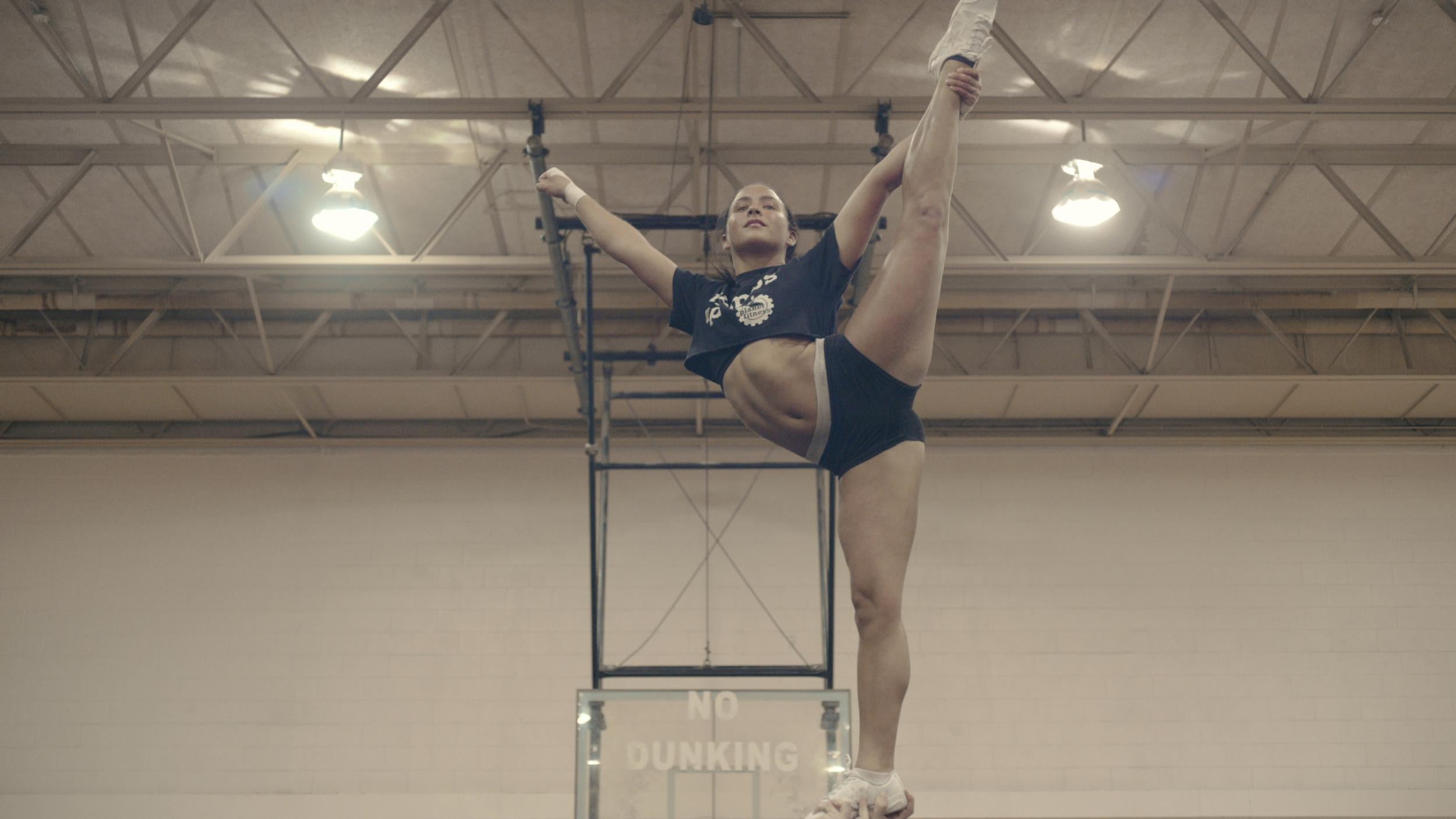Cheer is the myth-busting, tear-jerking sports documentary we deserve in 2020
Following the 13-time cheerleading champions at Navarro College, Texas, ‘Cheer’ is a fast and compulsive watch, writes Annabel Nugent. But there is far more to it than that


Your support helps us to tell the story
From reproductive rights to climate change to Big Tech, The Independent is on the ground when the story is developing. Whether it's investigating the financials of Elon Musk's pro-Trump PAC or producing our latest documentary, 'The A Word', which shines a light on the American women fighting for reproductive rights, we know how important it is to parse out the facts from the messaging.
At such a critical moment in US history, we need reporters on the ground. Your donation allows us to keep sending journalists to speak to both sides of the story.
The Independent is trusted by Americans across the entire political spectrum. And unlike many other quality news outlets, we choose not to lock Americans out of our reporting and analysis with paywalls. We believe quality journalism should be available to everyone, paid for by those who can afford it.
Your support makes all the difference.A cast of Regina George clones stomping over each other to be the top girl on the pyramid was the expected premise of Cheer. But the new six-part Netflix docuseries, which follows the cheerleading champions at Navarro College, Texas, is so much better than that. A myth-busting, tear-jerking, gravity-defying cultural phenomenon, Cheer is the sports documentary we deserve in 2020.
Director Greg Whitley is responsible for Netflix’s surprise college football hit Last Chance U. Now, he has turned his camera to the world of competitive cheerleading – and the painfully flexible, impossibly resilient kids who shape it.
We join the Navarro team in the lead-up to the annual National Cheerleading Association’s championship in Daytona Beach – a competition they’ve won 13 times. The defending champions manoeuvre game-changing injuries, inter-team drama and life in the gun-toting, God-blessed Texas county of Corsicana.
Cheer is a fast and compulsive watch, the episodes bookended with cliffhangers and designed with Netflix’s binge model in mind. Every chapter plays like a highlight reel of emotional climaxes – winners and losers, dominance and vulnerability.
Any notion of cheerleading as rah-rah sideline entertainment is quickly subverted. In the first episode, three girls are sitting out practice with concussions; every limb in sight is bandaged up in Kinesio tape to form a 40-strong army of fluorescent mummies, and the unmistakable sounds of skin hitting mat and head hitting knee are a frequent occurrence. It’s not hard to understand why Whitley called the cheerleaders the toughest athletes he’s ever filmed.
Cheerleading is the most dangerous sport for female athletes, accounting for over 65 per cent of catastrophic sports injuries. Unlike the machismo of the players in Last Chance U, the Navarro cheerleaders speak openly about their fear of injury. They tumble and stunt and fly through the air not because they believe they are invincible – they have endured enough muscle tears, broken bones and shoulder separations to know that’s not true – but because of the trust they have in one another. Coach Monica Aldama’s team-wide 50 push-up punishment for letting a girl hit the mat enforces the message that safety is everyone’s responsibility.
Given that the sport is generally thought of as blonde, blue-eyed and conservative, Cheer’s racial and gender dynamics are unexpected. Many of the male teammates are black or Hispanic, and while sexuality is not a main discussion point for the show, it is acknowledged and spoken about in a way that does not feel tokenised or clichéd. La’Darius is an all-round tumbler and base (the foundation for stunts) with sharp cheer moves and a sharper personality. He remembers coming out to disapproving brothers – a storyline that forms one of the show’s many redemptive arcs.

One trainer speaks about how cheerleading has become a sport for boys who felt that none existed for them. In the same episode, Aldama stipulates her staunch Christianity, saying that “if people come for [her] boys” she will “fight tooth and nail for them”. The boys offer an alternative version of peak male athleticism. While gender norms have started to erode, the world of sport has been slow in shaking its fossilised views. Athleticism is still shorthand for masculine, and masculine remains shorthand for straight.
Only a handful of male athletes have come out as gay, and most only felt comfortable doing so after their professional careers had ended. The visibility of gay male athletes challenges assumptions about masculinity, sexuality and athleticism. Cheer is an active site of resistance to the traditional heteronormative values in sport.
Monica Aldama is the prescribed antidote to Last Chance U’s toxic Coach Stephens, who – despite viewers’ hopes for a hidden humanity – didn’t turn out to be a good guy underneath all that screaming. Donning a French tip manicure and bejewelled Apple watch, Aldama looks nothing like Pep Guardiola or Bill Belichick, but with 13 national championships under her belt, she is well versed in victory and what it takes to achieve it. With straight-shooting tough love and a laser focus on winning, Aldama makes Coach Taylor in Friday Night Lights look like a substitute teacher coaching peewee baseball.
The figure of the emotionally abusive coach is commonplace in cinematic representations of sport, a subgenre that is overtly masculine. According to IMDB, of the 122 coach-focused Hollywood sports films that have been produced since 1985, just three feature female coaches.
In these male-dominated depictions, any semblance of emotional input is reserved for the two-minute pep talk where the antihero coach slings homophobic slurs at the rival team and doles out crumbs of praise to emotionally starved players who, like us watching, hungrily lap up the rare encouragement.
In Aldama’s gym, pep talks are everyday routine. Training begins with setting goals and ends with her cheerleaders joining pinkies in a prayer circle of sorts. Aldama has empowered her team to speak up for themselves, too, and often her cheerleaders will interject a practice if they feel someone’s energy isn’t up to par. While Aldama’s praise is hard-earned, her love isn’t – once you’re in the Navarro family, you’re in.
It’s why her cheerleaders are so devout. For many, Aldama is a surrogate or secondary parent figure. Jerry, a stunter whose perk and pep is almost a physical entity, lost his mother at the age of 16. La’Darius, a victim of child abuse, credits cheerleading as the reason he’s still alive.
Morgan, a 98-pound flyer (the girls who are tossed in the air) who was abandoned to live alone in a trailer in Wyoming as a young teen, tears up when recalling how Aldama remembered her name at the very first tryouts. It’s why, when Aldama asks her to pull a dangerous stunt, the answer is a no-brainer. “People have broken their necks doing this, but Monica needs me to do it so I’ll just do it. I would take a bullet for her.”

The all-star coach is not without bite, though. In a Machiavellian tactic, she mercilessly uses one cheerleader as a pawn to motivate another, and in one distressing sequence, Aldama forces a stunter to continue practice despite his back aching from a competition the night before.
Coaches in elite sport always have a hold on their team, and Aldama’s is no doubt a vice-like grip. But it is as much founded in respect and love as it is fear and a sense of debt. Her words carry an incantation-like effect: “If Monica thinks you can do it, then you can” is a refrain among her cheerleaders.
Her team’s devotion is unwavering largely because of her interest in their development as people, as well as championship-winning cheerleaders. When the team’s star tumbler Lexi, a silver-blonde vaping raver from Florida with a history of violence, has nude photographs leaked on social media, Aldama is the one to take her to the police and hold her hand.
College elite sport will always be problematic; young people doing dangerous things because an adult tells them to poses ethical questions – particularly when it is monetised. And Cheer is not perfect; the girls often disguise their pain so as to not disappoint Aldama, and cheerleading is a world still largely governed by looks; glittery, skin-tight costumes, washboard abs and a pearly white smile.
The pyramids and basket tosses are exhilarating to watch, and the show’s competitive streak is unmatched, but that’s not what sets Cheer apart. It is between the moments of high-energy action that Cheer’s real power lives. This is not the story of a top dog team dominating at Daytona, but of underdogs beating the odds to get there in the first place.
Cheer challenges cheerleading clichés as deftly as it discards tropes of masculinity and athleticism. In a sporting world where female coaches are given almost zero airtime, Aldama steps up to the mat and proves she’s as good as the best, if not better.
Flipping stereotypes at every turn, Cheer may not be the sports docuseries that we were expecting in 2020, but it’s certainly the one we need.
Join our commenting forum
Join thought-provoking conversations, follow other Independent readers and see their replies
Comments